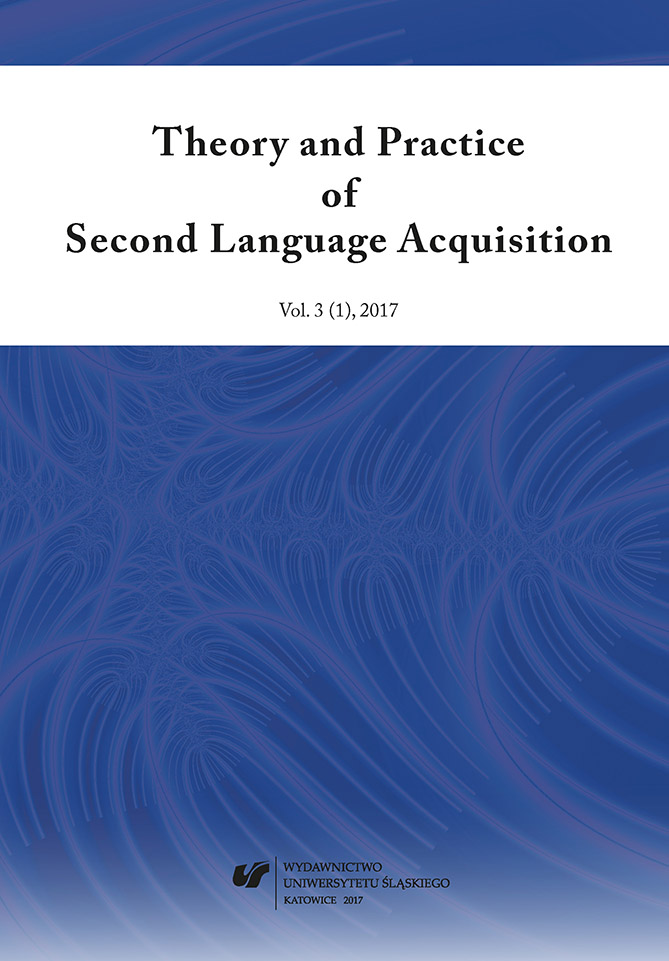Ajzen, I. (1988) Attitudes, Personality and Behaviour. Milton Keynes: Open University Press.
Google Scholar
Andersen, R.W. (1982) Determining the linguistic attributes of language attrition. In R. Lambert, B. Freed (eds.) The Loss of Language Skills (pp. 83-118). Rowley, MA: Newbury House.
Google Scholar
Baker, C. (1992, reprinted 1995) Attitudes and Language. Clevedon/Philadelphia/Adelaide: Multilingual Matters.
Google Scholar
Bardovi-Harlig, K. and Stringer, D. (2010) Variables in Second Language Attrition. Advancing the State of he Art. Studies in Second Language Acquisition 32 (1), 4-45.
Google Scholar
Cherciov, M. (2013) Investigating the impact of attitude on first language attrition and second language acquisition from a Dynamic Systems Theory perspective. International Journal of Biligualism 17 (6), 716-733.
Google Scholar
De Bot, K. and Clyne, M. (1994) A 16-year longitudinal study of language attrition in Dutch immigrants in Australia. Journal of Multilingual and Multicultural Development 15 (1), 17-18.
Google Scholar
Dubin, F. and Olshtain, E. (1993) Predicting Word Meanings from Contextual Clues: Evidence From L1 Readers. In T. Huckin, M. Haynes and J. Coady (eds.) Second Language Reading and Vocabulary Learning (pp. 181-202). Norwood, NJ: Ablex Publishing Corporation.
Google Scholar
Herdina, P. and Jessner, U. (2002) A Dynamic Model of Multilingualism. Perspectives of Change in Psycholinguistics. Clevedon: Multilingual Matters Ltd.
Google Scholar
Herdina, P. and Jessner, U. (2013) The implications of language attrition for dynamic systems theory: Next steps and consequences. International Journal of Biligualism17 (6), 753-756.
Google Scholar
Köpke, B. and Schmid, M.S. (2004) Language attrition: The next phase. In M.S. Schmid, B. Köpke, M. Keijzer and L. Weilemar (eds.) First language attrition: Interdisciplinary perspectives on methodological issues (pp. 1-43). Amsterdam, the Netherlands: John Benjamins.
Google Scholar
Moorcroft, R. and Gardner, R.C. (1987) Linguistic Factors in Second Language Loss. Language Learning 37 (3): 327-340.
Google Scholar
Preston, D. (1982) How to lose a language. Interlanguage Studies Bulletin 6 (2): 64-87.
Google Scholar
Riemer, C. (2005) Erwerb und Verlust von Fremdsprachen. Pilotstudien zum Verlust der L2 Französisch. Zeitschrift für Fremdsprachenforschung 16 (2): 217-233.
Google Scholar
Rychło, M. (2008) The Educational Approach to Language Teaching. Warsaw: Wydawnictwo Naukowe PWN.
Google Scholar
Sajavaara, K. (1986) Transfer and second language speech processing. In E. Kellerman, M. Sharwood-Smith (eds.) Crosslinguistic Influence in Second Language Acquistion (pp. 66-79). Oxford/ Toronto/ Sydney/ Frankfurt: Pergamon Press.
Google Scholar
Schmid, M.S. and Dusseldorp, E. (2010) Quantitative analyses in a multivariate study of language attrition. Second Language Research 26(1), 125-160.
Google Scholar
Schmid, M.S., Köpke, B. and de Bot, K. (2013) Language attrition as a complex, non-linear development. International Journal of Biligualism17 (6), 675-682.
Google Scholar
Seliger, H.W. and Vago, R.M. (1991) The study of first language attrition: an overview. In H.W. Seliger and R.M. Vago (eds.) First Language Attrition: Structural and Theoretical Perspectives (pp. 3-15). Cambridge/New York/Port Chester/Melbourne/Sydney: Cambridge University Press.
Google Scholar
Sharwood-Smith, M. (1986) The Competence/Control Model, Crosslinguistic Influence and the Creation of New Grammars. In E. Kellerman and M. Sharwood-Smith (eds.) Crosslinguistic Influence in Second Language Acquisition (pp. 10-20). New York/Oxford/Toronto/Sydney/Frankfurt: Pergamon Press.
Google Scholar
Sharwood-Smith, M.A. (1989) Crosslinguitic influence in language loss. In K. Hyltenstam, and L.K. Obler (eds.) Bilingualism across the lifespan: Aspects of acquisition, maturity and loss (pp. 185-201). Cambridge: Cambridge University Press.
Google Scholar
Szupica-Pyrzanowska, M. (2016) Language attrition – implications for second/foreign language acquisition. Lingwistyka Stosowana 16 (1), 109-120.
Google Scholar
Włosowicz, T.M. (2012) Errors in the M.A. theses of English philology students: A matter of competence or control? In M. Dakowska and I. Banasiak-Ryba (eds.) Foreign Language Didactics and is Application in the Educational Setting (pp. 185-209). Łódź-Warszawa: Społeczna Wyższa Szkoła Przedsiębiorczości i Zarządzania.
Google Scholar
Włosowicz, T.M. (2016a) Gap-filling in English as L2 as a form of text construction using contextual cues. In H. Chodkiewicz, P. Steinbrich, and M. Krzemińska-Adamek (eds.) Working With Text and Around Text in Foreign Language Environments (pp. 173-190) Switzerland: Springer International Publishing.
Google Scholar
Włosowicz, T.M (2016b) Adult Learners’ Expectations Concerning Foreign Language Teachers and the Teaching-Learning Process. In: D. Gabryś-Barker and D. Gałajda (eds.) Positive Psychology Perspectives on Foreign Language Learning and Teaching (pp. 267-285). Switzerland: Springer International Publishing.
Google Scholar
Zielonka, B. (2009) Must acquisition of articles be so difficult? In M; Wysocka (ed.) On language structure, acquisition and teaching. Studies in honour of Janusz Arabski on the occasion of his 70th birthday (pp.379-388). Katowice: Wydawnictwo Uniwersytetu Śląskiego.
Google Scholar



 10.31261/tapsla
10.31261/tapsla